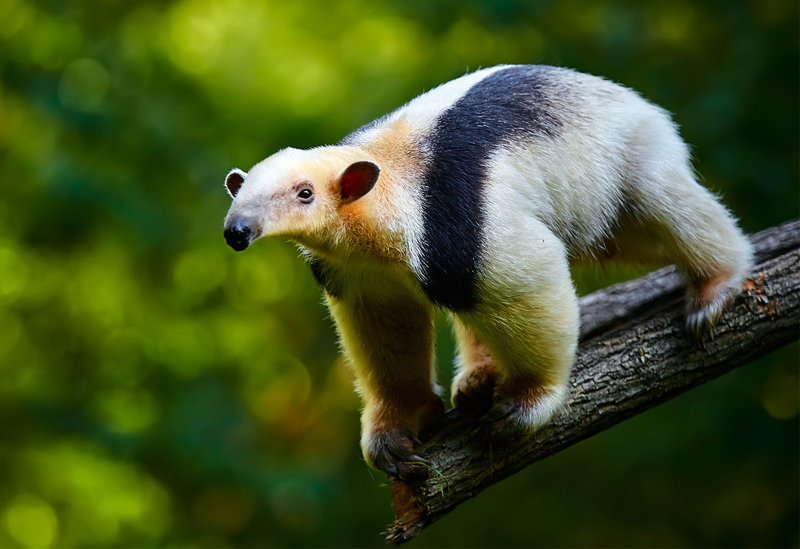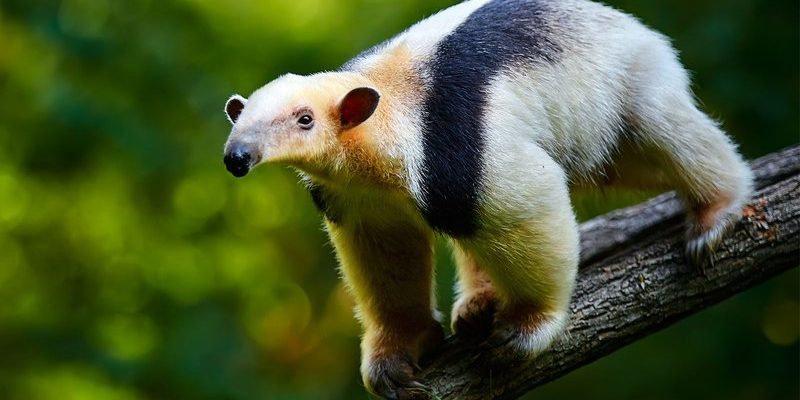
You might be wondering why anteaters have such a specialized diet, or how their living conditions affect their survival. By exploring the regions they inhabit, we can see how well adapted they are to their environments. Get your imaginary hiking boots on, and let’s take a step into the world of anteaters.
Types of Anteaters and Their Ranges
There are four main species of anteaters, each with its own unique habitat preferences. These are the giant anteater, the southern tamandua, the northern tamandua, and the silky anteater. Each of these species showcases its own adaptations to thrive in specific regions.
- Giant Anteater: The largest of the anteater family, this species can be found in a variety of habitats, including tropical rainforests, grasslands, and scrublands. They typically roam across Central and South America, from Honduras down to Argentina.
- Southern Tamandua: This smaller anteater tends to live in more forested areas, including rainforests and semi-deciduous forests. Their range stretches from the southern parts of Central America into northern South America.
- Northern Tamandua: Similar to its southern counterpart, the northern tamandua thrives in forested regions, but can also be spotted in more open areas. It ranges from central to northern South America.
- Silky Anteater: This tiny anteater prefers the tree canopies of tropical rainforests, where it’s well camouflaged among the leaves. You’ll mostly find them in areas like the Amazon basin.
The Giant Anteater’s Forests and Grasslands
The giant anteater is known for its impressive size and unique appearance, which makes it a favorite among animal enthusiasts. These creatures mostly inhabit three main types of environments: tropical rainforests, grasslands, and scrublands. This adaptability allows them to roam vast distances in search of food, primarily ants and termites.
In forests, giant anteaters enjoy the dense foliage that provides cover from predators. They use their sharp claws to dig into ant hills or termite mounds, showcasing their specialized feeding habits. In grasslands and scrublands, they benefit from open spaces that allow for better foraging. Honestly, it’s impressive to see how they use their keen sense of smell to locate food buried deep in the ground.
Since their habitats vary, giant anteaters often have to adapt to different climates as well. For example, during the dry season, they might migrate to areas with more abundant food sources, showcasing their remarkable ability to thrive in diverse environments. You might say they’re the ultimate survivalists!
Southern Tamandua’s Forested Areas
When exploring where southern tamanduas live, it’s essential to highlight their preference for forested regions. These anteaters mainly inhabit tropical and subtropical forests, often found in areas with abundant trees and dense vegetation. They are excellent climbers and spend a significant amount of time in the trees.
Southern tamanduas have a wide range that includes parts of Central America, extending into the northern regions of South America. Their ability to navigate both ground and canopy environments allows them to escape predators and access food sources. You might be surprised to learn that they’re also known to eat fruits and small insects in addition to ants.
Their adaptability is crucial for their survival in varying climates—from humid rainforests to drier environments. In these forests, you’ll often find tamanduas hanging around near water sources, as they need to stay hydrated in the warmer months. Watching them climb gracefully to find food is a sight to behold, and it reminds us of how beautifully interconnected these habitats are.
Northern Tamandua: A Similar Yet Unique Habitat
The northern tamandua, though similar to its southern cousin, has its own distinct range and habitat preferences. Generally found in similar forested regions, this species thrives in Central and northern South America. You’ll often find them in lowland tropical forests, as well as areas with deciduous trees that can support their climbing lifestyle.
These anteaters typically live alone or in small groups, and they climb to keep safe from predators while they forage. Unlike their giant counterparts, northern tamanduas may also venture into semi-open areas where they can find a mix of ants and small fruits. Here’s the thing: their varied diet is a significant advantage, allowing them to adapt to changes in their environment.
Sometimes, they might even be spotted in cultivated areas, taking advantage of the foods available. The challenge, however, is balancing their foraging needs with the threats posed by habitat destruction. Preserving their habitats is essential for ensuring their continued survival in a changing world.
Silky Anteaters and Their Tropical Canopies
The silky anteater, also known as the pygmy anteater, is quite different from its larger relatives. These little critters prefer the tree canopy of tropical rainforests, where they blend in beautifully with their silky fur. Their habitat is typically found in areas like the Amazon Basin, where dense trees provide shelter and abundant food.
Silky anteaters are mostly nocturnal, which means they’re active at night when it’s cooler. This lifestyle helps them avoid predators while hunting for their favorite snacks—mostly ants and larvae. You could say they’re like the ninjas of the animal kingdom, stealthily gliding through the branches in search of a meal.
Because of their reliance on specific forest types, the conservation of their habitats is crucial. Deforestation and habitat fragmentation pose significant threats to their survival, which emphasizes the importance of preserving these ecosystems. The more we understand about their habitats, the better we can work towards protecting them.
Impact of Habitat on Anteater Distribution
Understanding where anteaters live is essential for grasping how their habitats influence their behavior, diet, and survival. Each species has adapted to its environment in unique ways, impacting how it interacts with the ecosystem. For instance, their diets are often dictated by the availability of ants and termites, which vary based on the region.
Habitat destruction also plays a significant role in anteater distribution. Urban development, agriculture, and logging can lead to significant loss of habitat. As a result, anteater populations are forced into smaller and smaller areas, increasing competition for resources. This can lead to conflicts with humans as the animals search for food.
Moreover, climate change is starting to impact their distribution patterns. As temperatures rise and weather patterns change, some anteaters might be forced to move to new areas. This ongoing shift could potentially lead to further declines in their populations. Understanding these challenges helps us appreciate the importance of conservation efforts and habitat preservation for the future of this unique species.
Conservation Efforts and Habitat Protection
With the increasing threats to their habitats, conservation efforts for anteaters have become more critical than ever. Organizations focused on wildlife protection are working diligently to safeguard the natural environments where these animals live. Preserving forests and promoting sustainable land use are essential steps in ensuring their survival.
One effective approach has been establishing protected areas like national parks and reserves. These spaces offer safe havens for anteaters and many other species, allowing them to thrive without the pressures of human development. Additionally, educating local communities about the importance of preserving these habitats can foster a sense of stewardship toward wildlife.
On a broader scale, engaging in reforestation and habitat restoration programs can help replenish areas damaged by deforestation. By working together, we can make a positive impact on anteater populations and their ecosystems. Here’s the thing: protecting these habitats not only helps anteaters but also preserves countless other species that share their home.
As we reflect on the habitats and distributions of anteaters, it’s clear that they are incredibly adapted creatures navigating an ever-changing world. By understanding where they live, we can appreciate their unique contributions to ecosystems and the importance of conservation efforts to ensure their future. Every step we take toward habitat preservation is a step toward securing a place for these amazing animals in our world.

